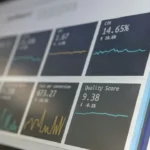Appropriate management of liabilities is as equally important aspect that forms the general well-being economically of any nation. Not all loans are bad but because it seems like it will be a continuing problem this is the reason why one has to learn how to manage it so that it will not turn into a strong pressure. Below are ideas that one can take from experts who have advised on methods that can be used to quickly and effectively execute such commitments for people’s well-being.
Understanding Debt
Debt is a word most people would prefer not to hear go around let alone be associated with because it equals stress, sleepless nights and diseases such as heart diseases. But there is what is commonly referred to as ‘good debts,’ these are debts which are beneficial to one’s financial position. But here the emphasis is put on understanding how you end up incurring debts and ensuring that you come out with ways of paying those debts without a lot of difficulty. You should always calculate your debt capacity to avoid some of the LT issues.
Awareness of Financial Liabilities
That is why he emphasized that one must be constantly aware of the presence of such financial liabilities to save one from paying so much for the interest on the timely settlement of other financial obligations. The following are measures that will enable one to clear the debts effectively.
Preparing to Manage Debt
As any debtor should follow some things before managing the debts, the staple things include the following. However, it can be pointed out that in any case, the choice of which of the strategies to follow, essentially, accurate and, hopefully, up-to-date information is necessary. Here are the initial steps to prepare:
Inventory of Debts
The first activity will be to identify and categorize all the loans that have been extended depending on their status. They include the total amount of loan, interest rate, period, date when the loan is expected to be due, minimum monthly installments among others. In this case, it is pertinent to use a spreadsheet to sort this information well. This will be useful especially when you are planning your financial futures as you will have well understood your debts.
Budget Review
Review the current monthly spending plan or create it if there is none as it is likely that one is yet to be prepared. In fact, concerning the identification and controlling of the budget, there are many programs and applications available over the internet. Most of the time, expenses should be classified as either essential or non-essential, whereby one will be in a position to determine elements that would require cutting down on. First, when determining how much more can be paid to debts to optimize what can be paid each month, one should be pragmatic. It will also be necessary to prepare a detailed budget that you should stick to when it comes to the issue of expenses regarding the repayment plan that you would have developed.
Debt Repayment Methods
That is why the manner of how to eliminate debts is also different. It all depends on one’s budget inclination and type. Here are some of the most effective methods:
The Snowball Method
In the snowball method, one is supposed to strictly adhere to the principle that debts must be paid based on the order of their sizes irrespective of the fact whether such debts attract higher interest rates than the others. Here’s how it works:
- List your debts from smallest to largest: It should comprise all the loans; including card loans and other forms of loans like personal loans.
- Make minimum payments on all debts except the smallest: Focus on the account with the lowest balance; however, do not neglect the other accounts.
- Allocate as much extra money as possible to the smallest debt: The ordinary man and woman should employ any other available monies for paying off such a kind of debt earlier.
- Once the smallest debt is paid off, move to the next smallest debt: Next, you add the total sum, which you were paying for the previous type of debt, to the next one.
This method is also psychologically uplifting and one in so many hours to days repaying the loan gives the morale to continue with the repayment. In essence, it partly answers the proposed research question to minimize, get rid of debts could be among the most powerful appeals that people may resort to, to avoid falling back to their恶劣 behavior.
The Avalanche Method
Hence, from all the discussed credit repair methods, the avalanche method involves payment of credit debts with higher interest rates. The steps are similar to the snowball method but focus on saving money on interest.
- List your debts by interest rate, from highest to lowest: It will usually show you which of your debts are inciting the highest interest rates on them.
- Once the highest-interest debt is paid off, move to the next highest interest debt: Continue with this course until all the debts have been cleared.
While it takes longer in the process of payment of the loan amount, it reduces the total amount of interest that is required to be paid for the specific duration of the taken loan. It is even cheaper in the long run though it may not look so in the beginning and might require a good amount of time to manage as well.
The Combined Method
It may also be good to have one of them that work on the full problem without a phase of divide and conquer, and the other which works on the sub-problems that have been partitioned through divide and conquer. The primary strategy recommended to adopt in this case is the snowball method to reap the fundamental benefits and then move to the avalanche to reduce the interest in the future. This blend rises in the fact that it draws from the psychological angle that is associated with the snowball method and the fiscal angle of the avalanche method.
Debt Consolidation
There is evidence that debt consolidation will be suitable for you if you are surrounded by multiple loans each of which comes along with different rates of interest and systematically unmatched terms of repayment. In this way, one obtains a new loan to pay off all the rest of the loans and the new loan turns out to be cheaper and obtained over a longer period. However, before you go for this option you need to think twice or even seek the services of a lawyer because this may also entail many other charges and may not be suitable for everyone.
SWOT Analysis of Debt Consolidation
Pros:
- Simplified Payments: Here again the use of the one payment method is valid since, instead of facing several payments, you will be making a single monthly payment.
- Potentially Lower Interest Rates: Still, it can work in such a way that sometimes one is offered the lower interest rate and therefore gets an advantage or two.
- Fixed Repayment Schedule: It is more organized when there is a way by which the money borrowed is to be reimbursed based on the plan.
Cons:
- Possible Additional Fees: Yet another feature of consolidation loans which can be reiterated is possible charges for originating the loan and (or) other charges.
- Risk of Higher Total Cost: However, if we take out a long time to repay the money, you can spend more in the long run even with a low-interest rate charged.
- Credit Impact: And it is also good to note that applying for a consolidation loan can adversely affect the credit score for some time.
Negotiating with Creditors
Thus, it is always advisable to talk with the creditors regarding matters of interest rates and accepting other costs whether you will be let off the hook or not as well as whether be allowed to make a form of payment other than interest. Do keep the creditor in the loop with how you are and your plan to pay them off. In general, creditors might be willing to negotiate as far as the case of default is concerned so as not to experience the same again.
The Following Are Some of the Measures That One Can Take When Engaging His/Her Creditors:
- Assess Your Situation: Understand their value and what they are willing to bring to the table concerning the money.
- Contact Your Creditors: Try to call all of your creditors and tell them the situation that led you to such a position and if they could help you out.
- Present Your Case: The following are some of the possible prompts that you should include when writing the letter; Reason why you need the money and how you will repay.
- Negotiate Terms: The creditor should always state measures that can be taken and may include among the following; he or she can reduce the interest charged, give him or her more time to make the payments or demand for full payment of the balance.
- Get Agreements in Writing: This may ensure that any of the agreed issues are written down so as to reduce any future disagreements on the agreed issues.
Other Things to Note When Repaying Debts
- Pay More Than the Minimum: In as much as this is preferred, it is advisable to avoid paying the minimum amount only on the statement as this harms the credit score. This repays the principal at a faster rate thus reducing the total amount of interest chargeable.
- Use Extra Money Wisely: In any case, when one receives what he or she considers a windfall in form of an end of year bonus for instance or tax rebates or any form of extra income, such money must be used to pay off debts, so that one does not spend ages in indebtedness.
- Avoid New Debt: In your process when you are struggling to clear your standing expenses then do not borrow additional loans. This stretches your reimbursement schedule and foggy your monetary map.
Planning and Discipline
Thus, the relaxation of debt quickly and effectively requires a lot of measures, qualities, decisive perseverance, and focus on the task.
Here Are Some Additional Tips to Help You Stay on Track:
- Set Clear Goals: What concerns the payment of the debt, set an objective that must be achieved and outline this schedule.
- Track Your Progress: They should practice this faithfully to make sure they are motivated and if not, they should modify the technique being utilized.
- Stay Disciplined: On your budget try and ensure that you do not spend too much, it is advisable to only spend on areas you have to. Remember that every dollar saved can make a difference in reducing the amount of the debt.
- Seek Support: It would be extremely challenging to stay enthusiastic; to deal with this one should sometimes go to a support group meeting, or just hire a financial planner.
Conclusion
Debt management and debt payoff therefore involves the existence of an understanding of what the position is all about, formulation of a working strategy, and choice of an appropriate method of paying the debt. Whichever the chosen healing method, the snowball method, the avalanche method, or both simultaneously, one has to stick to the plan and tries to remain organized. Nevertheless, one should also consider debt consolidation and creditor ways to lessen the quantity of the debt. In light of the evaluation completed, it is conceivable that one can arrive at fiscal stability and eradicate concern by doing so effectively. Every financial plan and or condition is unique and as such it is always warranted that one analyzes such an action carefully. If you have a sensation of business expedite you had better consult a finances councillor who assist you select the good stratagem and machinery thereafter keep your reimbursement.
When sticking to the aforementioned strategies and being disciplined on handling the debts it would be possible to repay all the debts in the shortest time possible and thus attain the expected financial stability.











